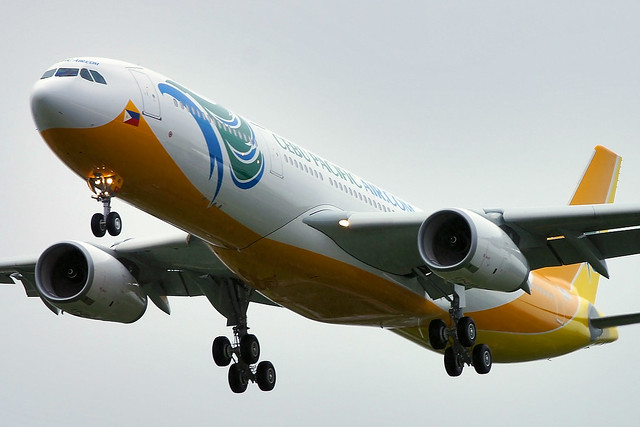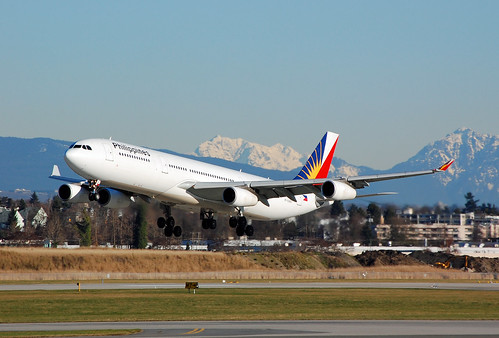10 July 2013
Brussels
The European Commission has updated today for
the 21st time the European list of airlines subject to an operating ban
or operational restrictions within the European Union, better known as
"the EU air safety list".

Following improvements in the safety situation
in the Philippines, Philippine Airlines is the first airline from this
country allowed back into European skies since 2010.
The same is true
for the Venezuelan airline Conviasa, which was banned in 2012. Progress
was also noted in Libya but the Libyan authorities agreed that Libyan
airlines would not be allowed to operate in Europe until they are fully
re-certified to the satisfaction of the European Union.
Siim Kallas, Commission Vice-President responsible for transport, said: "The
EU air safety list was created for the protection of European skies and
citizens, but it can also serve as a wake-up call to countries and
airlines in need to get their safety house back in order. Today we
confirmed our willingness to remove countries and airlines from the list
if they show real commitment and capacity to implement international
safety standards in a sustainable manner. Beside Philippines, Venezuela
and Mauritania, good signs of progress are also coming from a number of
other African countries."
The new list replaces and updates the previous one, adopted in December 2012, and can be consulted on the Commission’s website1.
Taking into account the improved safety
oversight provided by the competent authorities of the Philippines, and
the ability of the air carrier Philippine Airlines to ensure effective
compliance with relevant aviation safety regulations, and following an
on-site safety assessment visit last June, it was decided to lift the
ban affecting this carrier registered in the Philippines. For all other
carriers registered in the Philippines the ban remains.
Conviasa, registered in Venezuela, was also
removed from the EU air safety list, following the successful resolution
of the serious safety deficiencies which led to its ban from EU skies
in April 2012. These improvements were proved during consultations with
the Commission and the EU's Agency for aviation safety (EASA), and
through recent audits performed by Spain and by the International Civil
Aviation Organization (ICAO) in Venezuela.
In December 2012
Mauritania became the first country to be fully removed from the EU air
safety list, where it was added in 2010. The improvements that led to
this decision were verified during an on-site safety assessment visit
conducted by the Commission in April 2013.
Consultations were held with the civil
aviation authorities of Libya. Progress was noted by the Committee, but
the Libyan civil aviation authorities agreed to maintain the voluntary
restrictions applicable to all airlines licensed in Libya. This
voluntary restriction excludes Libyan airlines from flying into the EU
until when they will be fully recertified in accordance with
international safety standards. The on-going implementation of these
measures will remain under close monitoring by the Commission and the EU
Air Safety Committee.
The Commission also praised the good progress in Sudan as well as in Mozambique.
The Commission recognised the efforts of the
safety oversight authorities of the Democratic Republic of Congo,
Indonesia, Kazakhstan, Libya, Mauritania, Mozambique, Philippines,
Russia and Sudan to reform their civil aviation system and to improve
safety, in order to eventually become able to guarantee the effective
application of international safety standards. The Commission continues
to actively provide support and assistance for these reforms in
cooperation with ICAO, EU Member States and EASA.
Further updates to the EU air safety list were
due to the removal of some airlines that ceased to exist and the
addition of new ones recently created in a number of banned countries:
the Democratic Republic of Congo, Indonesia, Kyrgyzstan, Mozambique,
Sudan and the Philippines.
Finally, Annex B of the EU air safety list
(which contains carriers allowed to operate in the EU but under strict
limitations and conditions) was amended in order to reflect the renewal
of the fleet of Air Madagascar (permitted to use an additional aircraft)
and of Air Astana from Kazakhstan (the old Fokker aircraft not anymore
in use were deleted from the Annex).
Today's Commission
decision was based on the unanimous opinion of the EU Air Safety
Committee in which safety experts from each of the 28 Member States
participate, as well as from Norway, Iceland, Switzerland, and EASA.
Background information
The updated EU air safety list includes all
airlines certified in 20 States, for a total of 278 airlines fully
banned from EU skies: Afghanistan, Angola, Benin, Republic of Congo, the
Democratic Republic of Congo, Djibouti, Equatorial Guinea, Eritrea,
Gabon (with the exception of 3 airlines which operate under restrictions
and conditions), Indonesia (with the exception of 5 airlines),
Kazakhstan (with the exception of one airline which operates under
restrictions and conditions), Kyrgyzstan, Liberia, Mozambique,
Philippines (with the exception of one airline), Sierra Leone, Sao Tome
and Principe, Sudan, Swaziland and Zambia. The list also includes 2
individual airlines: Blue Wing Airlines from Surinam and Meridian
Airways from Ghana, for a grand total of 280 airlines.
Additionally, the list includes 10
airlines subject to operational restrictions and thus allowed to operate
into the EU under strict conditions: Air Astana from Kazakhstan,
Afrijet, Gabon Airlines, and SN2AG from Gabon, Air Koryo from the
Democratic People Republic of Korea, Airlift International from Ghana,
Air Service Comores from the Comores, Iran Air from Iran, TAAG Angolan
Airlines from Angola and Air Madagascar from Madagasca.
For more information:
 The Civil Aviation Authority of the Philippines (CAAP) has issued an order limiting flights of general aviation traffic from using Ninoy Aquino International Airport beginning July 31.
The Civil Aviation Authority of the Philippines (CAAP) has issued an order limiting flights of general aviation traffic from using Ninoy Aquino International Airport beginning July 31.


















